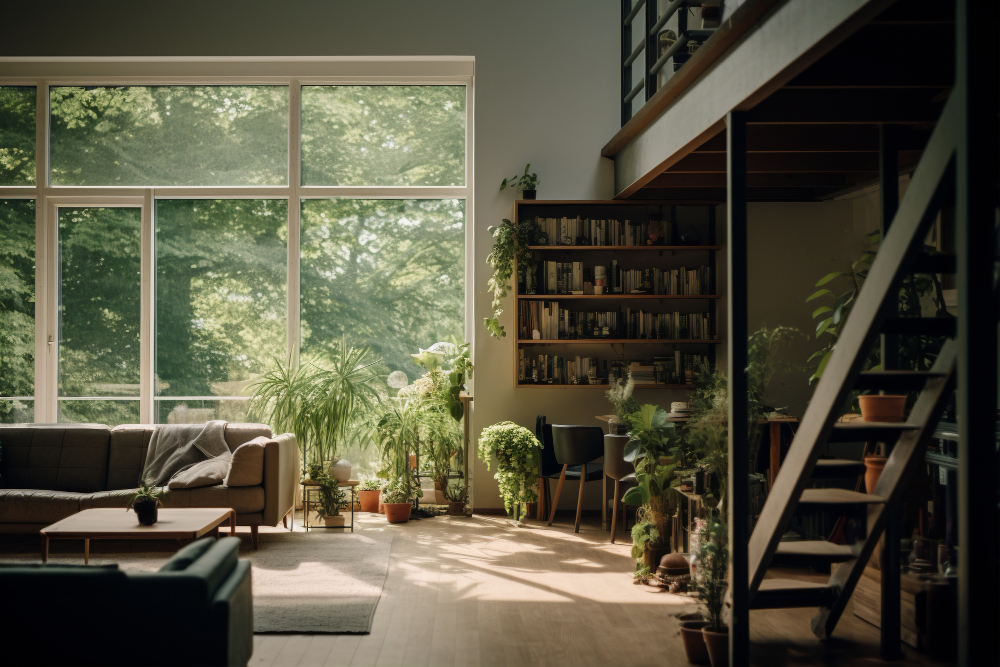
In the bustling urban landscapes of today, where concrete jungles dominate the horizon, there is a growing recognition of the profound impact that nature has on our well-being. Biophilic design emerges as a compelling approach to bridge the gap between our built environments and the natural world, offering not only aesthetic benefits but also enhancing our physical, mental, and emotional health. This article explores the principles, benefits, and applications of biophilic design in modern spaces, illustrating how it enriches our lives by reconnecting us with nature.
Understanding Biophilic Design
Biophilic design is rooted in the concept of biophilia, which posits that humans have an innate affinity for nature and natural processes. This design approach seeks to incorporate elements of nature—such as natural light, vegetation, water features, and natural materials—into the built environment. By integrating these elements thoughtfully, biophilic design aims to create spaces that evoke the same sense of well-being and connection to nature that we experience in outdoor settings.
Key Principles of Biophilic Design
Visual Connection with Nature: Incorporating views of natural landscapes, vegetation, or water bodies from indoor spaces enhances psychological well-being and reduces stress levels.
Natural Light and Air:
Maximizing access to natural light and ventilation not only reduces energy consumption but also improves indoor air quality and supports our circadian rhythms.
Presence of Water:
Integrating water elements such as fountains, ponds, or even simulated water features promotes relaxation and sensory stimulation.
Use of Natural Materials:
Choosing materials like wood, stone, bamboo, and cork connects us to the natural world while also reducing the environmental footprint of construction.
Biomorphic Forms and Patterns:
Including designs and patterns that mimic natural shapes, textures, and colors can evoke a sense of comfort and familiarity.
Benefits of Biophilic Design
1. Enhanced Well-being and Mental Health
Studies have shown that exposure to nature, even in simulated or indoor environments, can significantly improve mood, reduce stress, and enhance cognitive function. Biophilic design harnesses these benefits by creating spaces that foster relaxation, creativity, and a sense of tranquility. This is particularly valuable in high-stress environments such as workplaces and healthcare facilities, where promoting mental well-being is essential.
2. Increased Productivity and Creativity
Workplaces designed with biophilic principles have been found to boost productivity and creativity among employees. Access to natural light, views of greenery, and biophilic elements can reduce fatigue, increase focus, and inspire innovative thinking. This can lead to better job satisfaction, higher job performance, and reduced absenteeism.
3. Improved Physical Health
Biophilic design supports physical health by enhancing indoor air quality, reducing pollutants, and promoting a healthier lifestyle. Indoor plants, for example, not only beautify spaces but also act as natural air purifiers, removing toxins and increasing oxygen levels. Additionally, natural light exposure supports vitamin D production and regulates our sleep-wake cycles, contributing to overall health and well-being.
4. Sustainable Design Practices
Incorporating biophilic design principles aligns with sustainable architecture and environmental stewardship. By using natural materials, optimizing energy efficiency through passive design strategies, and integrating green technologies, biophilic buildings reduce their ecological footprint and contribute to a healthier planet.
Applications of Biophilic Design
1. Residential Spaces
In homes, biophilic design can create nurturing environments that promote relaxation, family bonding, and personal well-being. From rooftop gardens and indoor plant walls to natural materials in furnishings and finishes, homeowners can cultivate a sense of connection to nature within their living spaces.
2. Workplaces
Office environments benefit greatly from biophilic design interventions that enhance employee satisfaction, productivity, and overall job performance. Incorporating green walls, indoor gardens, communal outdoor spaces, and natural light optimization can transform traditional office settings into vibrant, inspiring workplaces.
3. Educational Facilities
Schools and universities implementing biophilic design principles create conducive learning environments that support student engagement, concentration, and academic achievement. Outdoor classrooms, green courtyards, and daylighting strategies contribute to a positive educational experience and student well-being.
4. Healthcare Settings
Hospitals and healthcare facilities utilize biophilic design to reduce stress among patients, visitors, and staff. Healing gardens, views of nature from patient rooms, and artwork depicting natural scenes create calming environments that aid in recovery and promote a sense of comfort and healing.
Conclusion: Embracing Nature in Design
Biophilic design represents a transformative approach to architecture and interior design that prioritizes human well-being and environmental sustainability. By integrating elements of nature into our built environments, we not only enhance the aesthetics and functionality of spaces but also nurture our innate connection to the natural world. As cities continue to grow and evolve, the principles of biophilic design offer a pathway to creating healthier, more resilient communities where people can thrive physically, mentally, and emotionally.
As designers, architects, and policymakers embrace biophilic design principles, they contribute to a more harmonious relationship between people and their surroundings. By cultivating environments that honor our biophilic instincts, we pave the way for a future where nature and urban living coexist in harmony, enriching our lives and sustaining our planet for generations to come.
